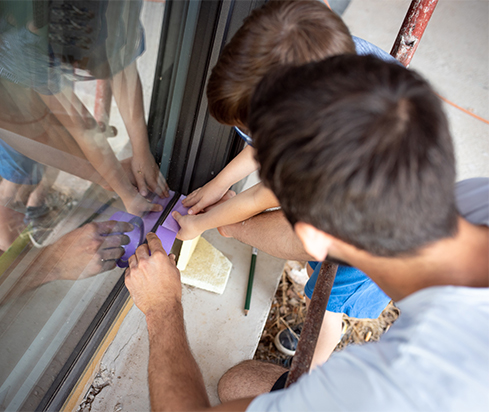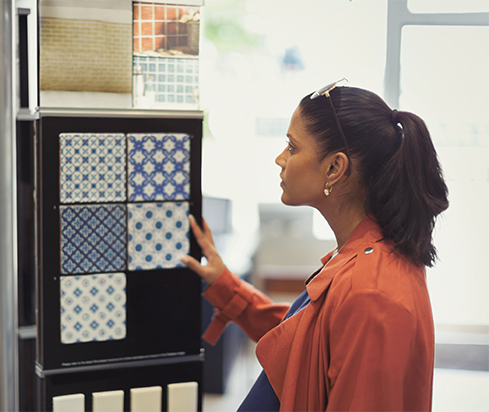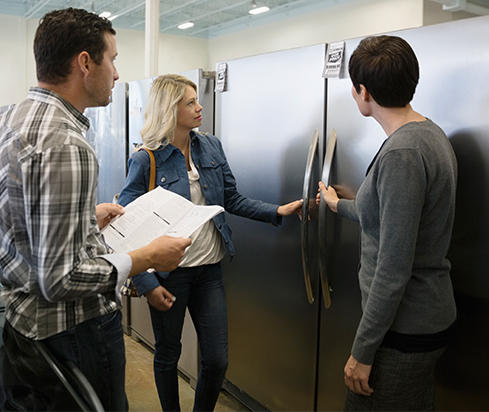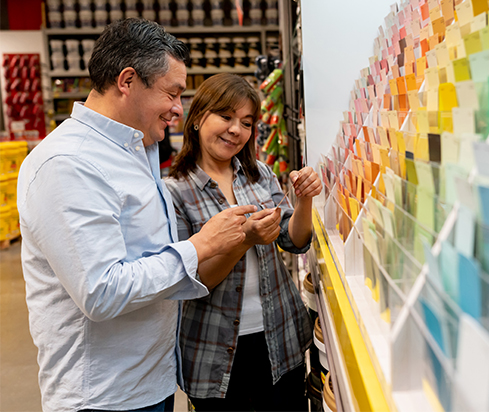Five Tips for Home Renovations That Will Help You Save Money and the Environment
Sustainable living and ‘green’ building, which refers to the practice of environmentally friendly design and construction to reduce negative, human-caused effects, is on the rise as metropolitan areas grapple with the ramifications of climate change.
A 2018 survey conducted by Dodge Data & Analytics revealed that 47 percent of respondents expect over 60 percent of their development projects to be green certified by 2021. Although green building is often discussed in the context of helping the environment, it can also better your health and minimize economic loss. According to a study performed by the Center for NYC Neighborhoods, 19 percent of New York City’s total carbon emissions are attributed to small homes. Homeowners in New York City (with a population of nearly 9 million) may be capable of making a large environmental impact by increasing sustainable practices. As with many efforts toward change, the path towards a sustainable future may begin at home.
Whether you are an investor looking to increase your competitive advantage or a homeowner considering a fresh look for your home, carrying out renovations in a sustainable way could benefit your community, your health and your wallet. Consider these simple steps toward making your home greener, more efficient and more valuable.
1. Audit your home’s current energy performance.
 Drafty windows and doors, and outdated energy-guzzling appliances, may hinder your home’s ability for optimum energy efficiency. You might consider an energy audit to reveal energy inefficiencies and pinpoint where those inefficiencies lie. As you address the root of the problem, your next steps for home renovation will become simpler. In addition, you will be able to calculate how much energy your new home is saving.
Drafty windows and doors, and outdated energy-guzzling appliances, may hinder your home’s ability for optimum energy efficiency. You might consider an energy audit to reveal energy inefficiencies and pinpoint where those inefficiencies lie. As you address the root of the problem, your next steps for home renovation will become simpler. In addition, you will be able to calculate how much energy your new home is saving.
The U.S. Department of Energy highly recommends the Residential Energy Service Network directory, a database for professionally trained energy raters, to assess your home’s energy performance.
2. Insulate and weatherize.
 Air leakage through openings in your home also decreases energy efficiency and increases energy costs. According to EPA estimates, “[h]omeowners can save an average of 15 percent of heating and cooling costs… by air sealing their homes and adding insulation.” These are important practices that promote sustainable living, as they help keep internal temperatures comfortable while minimizing heating and cooling needs. Cellulose is an effective sealing measure as it can be applied over pre-existing insulation. Additional durable materials to consider are weather stripping and caulk.
Air leakage through openings in your home also decreases energy efficiency and increases energy costs. According to EPA estimates, “[h]omeowners can save an average of 15 percent of heating and cooling costs… by air sealing their homes and adding insulation.” These are important practices that promote sustainable living, as they help keep internal temperatures comfortable while minimizing heating and cooling needs. Cellulose is an effective sealing measure as it can be applied over pre-existing insulation. Additional durable materials to consider are weather stripping and caulk.
3. Source locally and responsibly.
 The use of responsibly sourced materials is another critical aspect to building a sustainable home. Responsibly sourced materials are those that refrain from releasing toxins into the earth’s atmosphere during their production processes. Reclaimed wood, for example, is a great option for home renovations, as its beautifully aged exterior attracts buyers while also preventing the unnecessary harvesting of trees. Other sustainable and durable materials include nontoxic backing, glues and finishes, concrete or stone countertops and ceramic tile. These products are easily maintainable and significantly reduce carbon and toxin emissions.
The use of responsibly sourced materials is another critical aspect to building a sustainable home. Responsibly sourced materials are those that refrain from releasing toxins into the earth’s atmosphere during their production processes. Reclaimed wood, for example, is a great option for home renovations, as its beautifully aged exterior attracts buyers while also preventing the unnecessary harvesting of trees. Other sustainable and durable materials include nontoxic backing, glues and finishes, concrete or stone countertops and ceramic tile. These products are easily maintainable and significantly reduce carbon and toxin emissions.
In addition to the careful selection of materials based on their production, you might consider where such productions occur. By choosing locally sourced materials for your home renovation, you are taking steps to reduce contamination caused by the transport of materials from overseas. Buying local products can also support local businesses and ensure that materials are appropriate for the New York climate.
4. Update your appliances.
 Energy efficiency has become an important feature of new appliances. As a result, older appliances are more than likely to consume more energy than necessary. By updating appliances such as HVAC systems, light fixtures and refrigerators, you can reduce your carbon footprint while also reducing your energy costs. Smart home thermostats are also a beneficial investment that contribute to sustainable living. They can be controlled from a distance through electronic devices and be automated to minimize unnecessary heating and cooling.
Energy efficiency has become an important feature of new appliances. As a result, older appliances are more than likely to consume more energy than necessary. By updating appliances such as HVAC systems, light fixtures and refrigerators, you can reduce your carbon footprint while also reducing your energy costs. Smart home thermostats are also a beneficial investment that contribute to sustainable living. They can be controlled from a distance through electronic devices and be automated to minimize unnecessary heating and cooling.
5. Use low-VOC paints.
 Volatile organic compounds (VOC) are chemicals that evaporate into the air at room temperature. EPA studies suggest that VOC levels are two to five times higher indoors than outdoors. Since most paints are made with petroleum-based solvents, VOCs are highly present and may emit carcinogenic toxins to the air inside your home. These toxins may then cause health issues such as headaches and nausea, as well as respiratory, eye and skin irritations.
Volatile organic compounds (VOC) are chemicals that evaporate into the air at room temperature. EPA studies suggest that VOC levels are two to five times higher indoors than outdoors. Since most paints are made with petroleum-based solvents, VOCs are highly present and may emit carcinogenic toxins to the air inside your home. These toxins may then cause health issues such as headaches and nausea, as well as respiratory, eye and skin irritations.
Using low-VOC paints is an option to combat VOC emissions. Instead of using petroleum-based solvents, these paints use water, which can positively affect the air in your home while also cutting down your consumption of petroleum.
If you are looking to renovate or expand your home, consider leveraging a home equity line of credit to implement these sustainable renovations, which may reduce your carbon footprint, increase the value of your property and save money on unnecessary energy and maintenance costs.


